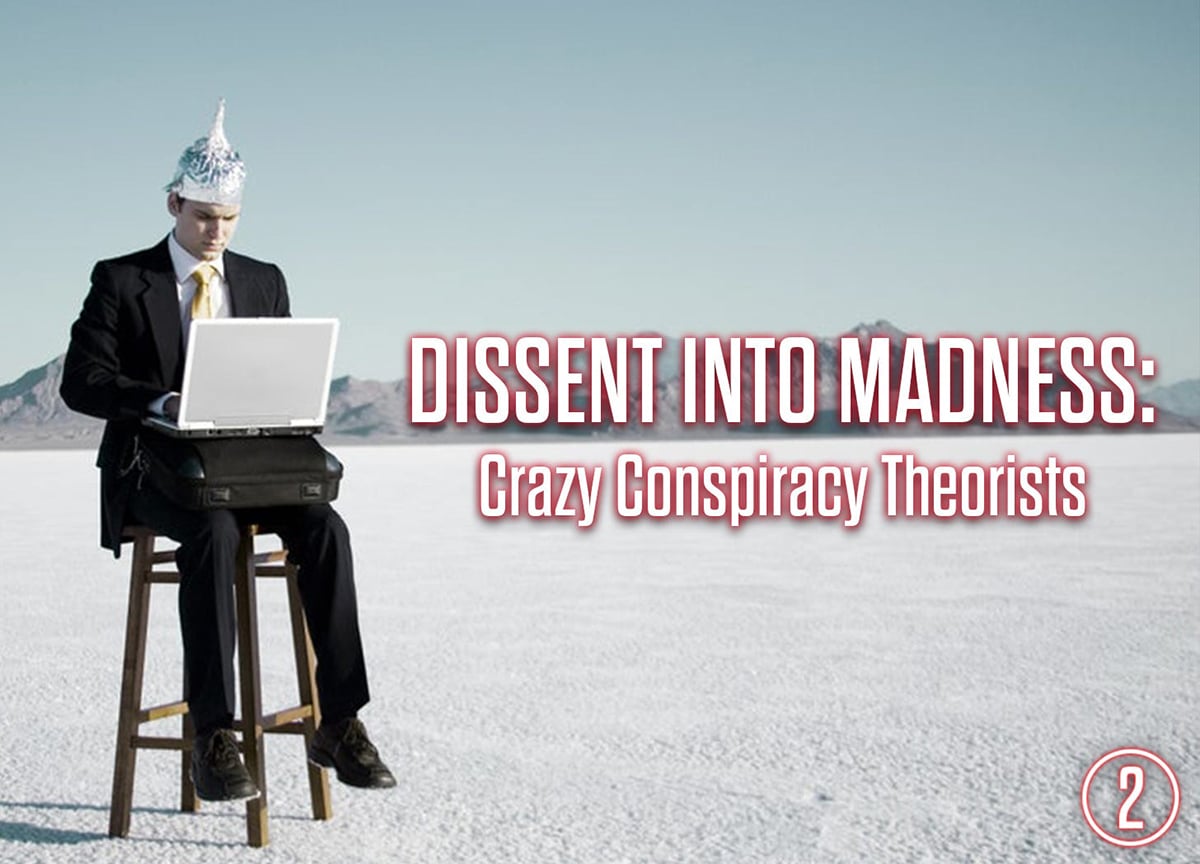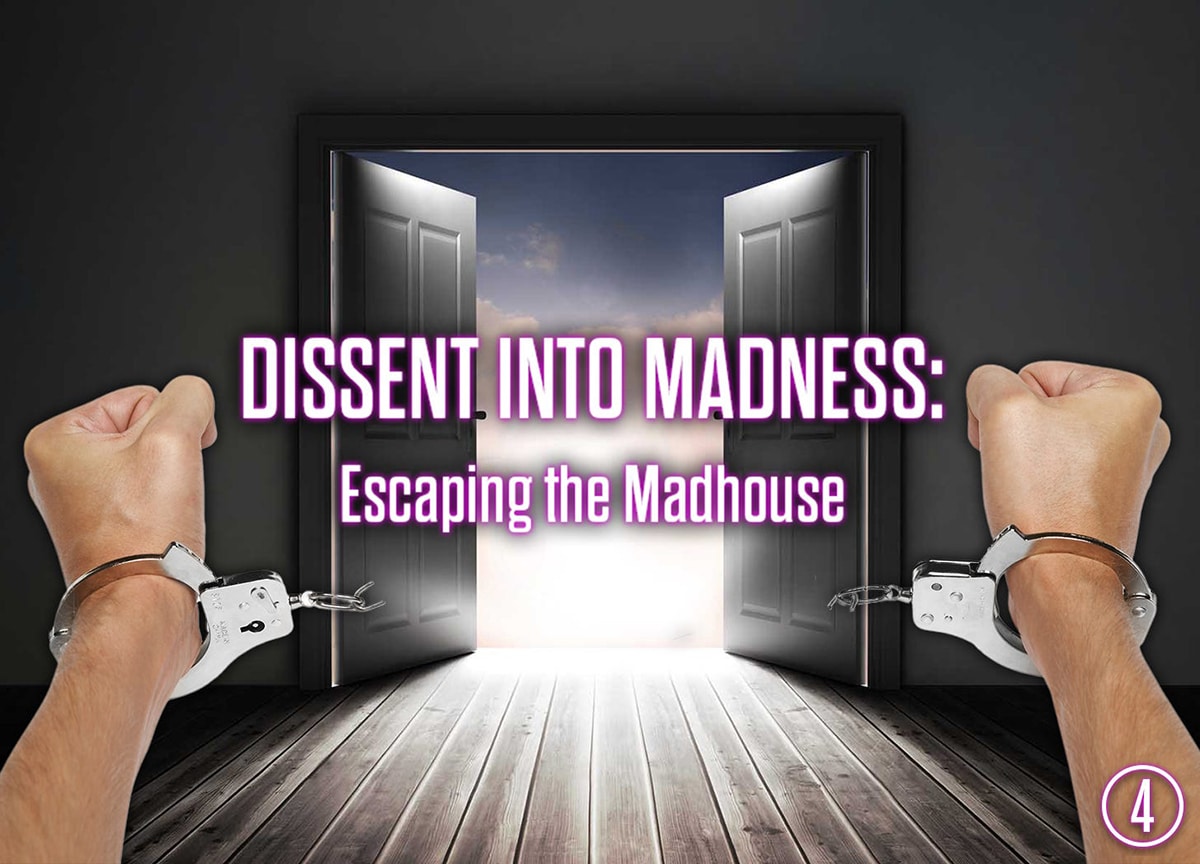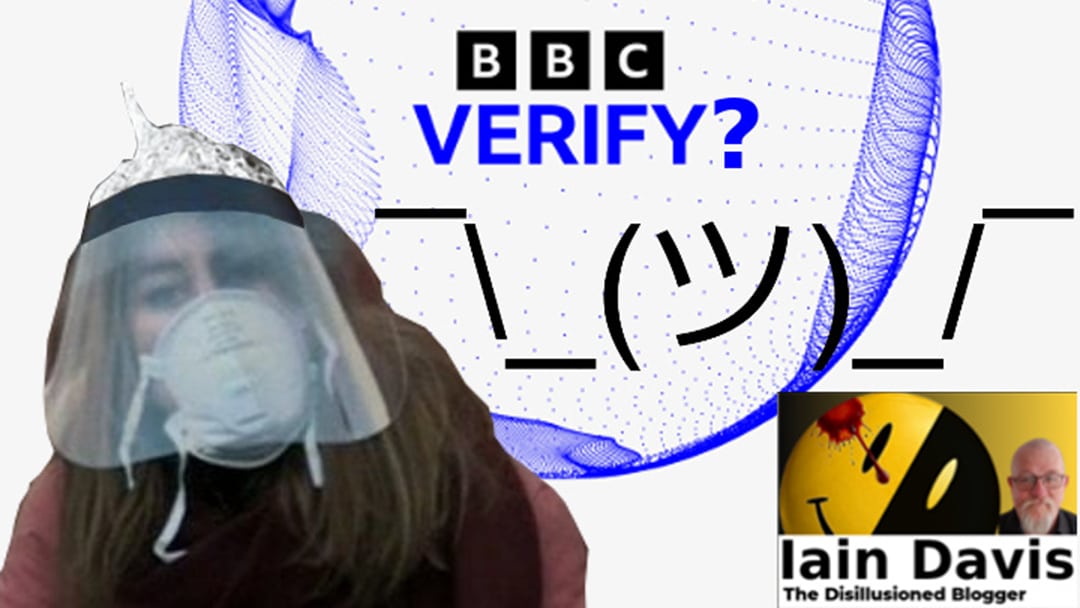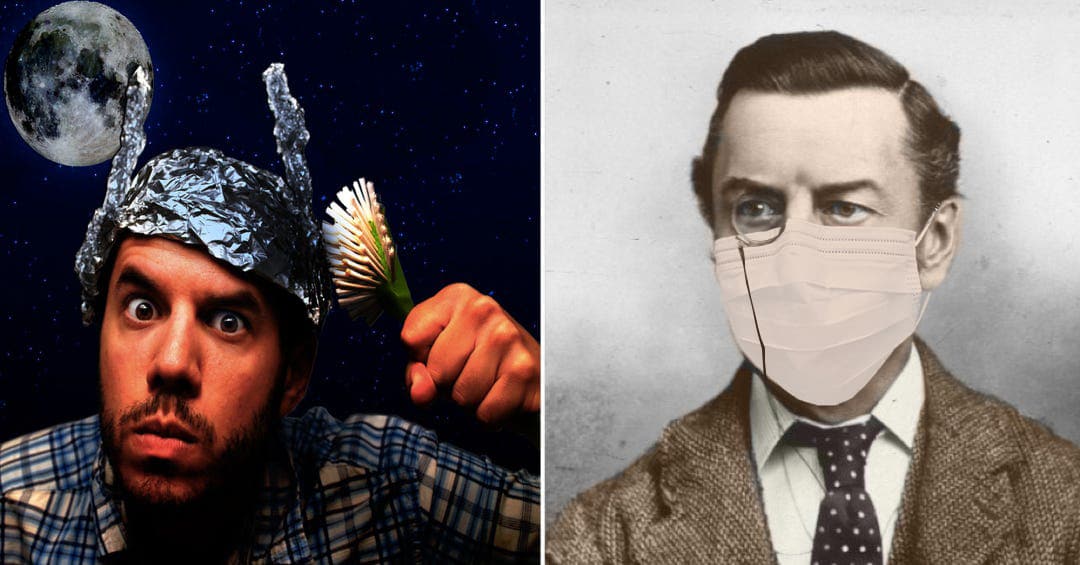

Dissent Into Madness: Crazy Conspiracy Theorists
by James Corbett, | Mar 19, 2023
In “Dissent Into Madness: The Weaponization of Psychiatry,” I told the long and sordid history of how the study of the mind has been used to suppress political opposition and subdue unruly segments of the population—not just in the “enemy states” of Soviet Russia or Nazi Germany or communist Cuba, but in England and the US and the rest of the “free and democratic West” as well. I also looked at specific examples of how this was accomplished and named names of some of the figures who had a hand in forging this psychiatric weapon.
With that history in mind, this week I will explore how the public has been trained to accept the pathologization of those peskiest of dissenters, the conspiracy realists. I will also explain how the trigger has already been pulled on this psychiatric weapon and how it is impacting those who dare question the motives of our would-be rulers.
Are you ready? Let’s begin . . .
Pathologizing Conspiracy

One of the most popular articles to be written in recent decades is titled “Why Do People Believe in Conspiracies?”
It starts by noting the worrying rise in the number of people who believe in wild, outlandish theories about how people in positions of power conspire to maintain their influence and expand their wealth.
The article’s author then cites a psychologist, who explains that well-meaning but emotionally unstable people typically latch on to these fantastical conspiracy theories because they help these poor, deluded souls make sense of the world and offer them a feeling of control over an uncontrollable world.
Next, the report offers advice to those who are seeking to disabuse anyone who has fallen for this conspiracy claptrap of their delusional notions. That advice, it turns out, is the same admonition given to someone coming upon a wild animal in the jungle: don’t confront the target directly or make them angry; speak to them in soothing tones and pretend to listen to what they’re saying; and disengage if it seems they’re preparing to attack.
But this article usually ends on a positive note: if this wild conspiracy theorist you’re talking to hasn’t yet lost touch with reality, then it may be possible to talk them down from the ledge. You can gently create some cognitive dissonance in their mind by pointing out that every conspiracy that has ever occurred in history has been exposed by whistleblowers and reported on by journalists, and therefore there is no such thing as a secret conspiracy. If they are of sound mind, this will be enough. Your confused friend will see the light and learn to trust government and authority once again.
Do you want to read this article? Would you like a link? Well, I don’t have one link for you; I have dozens.
You see, the curious thing about this “Why Do People Believe in Conspiracies?” article is that it hasn’t been written just once or twice. It’s been written hundreds of times by hundreds of different journalists, and it’s been published by the BBC and FiveThirtyEight and Vox and the American Psychological Association and The New York Times and PsychCentral and Addiction Center and LSU and Technology Review and National Geographic and verywellmind and Business Insider and Psychology Today and Harvard and LiveScience and Scientific [sic] American and NBC News and The Conversation and Intelligencer and Time and The Guardian and Popular Mechanics and even that most prestigious of journalistic institutions, goop. (Yes, goop!)
And it’s not only in written form. It’s also a video report that’s been filed by the CBC and Channel 4 and CNBC and Channel 4 (again) and DNews and StarTalk and 60 Minutes and Time and DNews (again) and Big Think and Al Jazeera and the Weekly and Tech Insider and Inverse and Dr. Todd Grande and euronews and CBS News and The University of Chicago.
Oh, and did I mention it’s also a podcast? Well, it is, and it’s been produced by Ava Lassiter and NPR and Radio Times and NPR (again) and LSE and Bill Gates and NPR (again again) and The Anthill and Speaking of Psychology and NPR (again again again) and Big Brains and NPR (again again again again).
So, are you starting to formulate a hypothesis that there may be some grand scheme afoot here? Do you find yourself speculating that perhaps (just perhaps) there might be a coordinated effort to pathologize conspiracy theorists in order to justify locking them away in padded cells?
Do you find it interesting that the terms “conspiracy theory” and “mental disorder” were forever linked in the public imagination when Richard Hofstadter penned his infamous 1964 essay in Harper’s Magazine, “The Paranoid Style in American Politics“? Or that the best-remembered passage from that essay is the one in which he describes the “style of mind” behind the conspiracy-prone, populist political movement of his era as “the paranoid style” because “no other word adequately evokes the sense of heated exaggeration, suspiciousness, and conspiratorial fantasy that I have in mind”? Or that his caveats to that “diagnosis”—namely, that “I am not speaking in a clinical sense, but borrowing a clinical term for other purposes” and that “I have neither the competence nor the desire to classify any figures of the past or present as certifiable lunatics”—are largely forgotten?
Then the dinosaur media pundits and their psychiatric “experts” have a message for you: “Shut Up, Conspiracy Theorist!, or we’re going to put you in a straitjacket!”
Don’t believe me? Well . . .
First They Came for the Truthers . . .

The idea that those who believe in conspiracy theories are mentally unsound is, of course, not a new one.
Witness how the subject was treated on Barney Miller, a popular American television sitcom from the late 1970s that centered on the exploits of a cast of detectives in a New York City Police Department station house. In one episode from 1981, a man is arrested for breaking into the offices of the Trilateral Commission because, as he explains in an impassioned speech that is bizarrely punctuated by canned laughter, “what they are really up to is a scheme to plant their own loyal members in positions of power in this country; to work to erase national boundaries and create an international community; and, in time, bring about a one world government, with David Rockefeller calling the shots!”
The man then presents his evidence of this conspiracy in the form of articles in periodicals like Conspiracy Review and Suppressed Truth Round-up. Barney Miller’s sneering reaction (along with the ever-present laugh track) is enough for the viewer to understand that this burglar—and, by implication, anyone who harbours similar views about the Trilateral Commission or other globalist institutions—is a delusional criminal who deserves to be locked up for those beliefs.
Or take the “tin foil hat” conceit. As the crack journalists over at Vice helpfully explain, the concept of wearing a tin foil hat to protect one’s brain from government mind control was introduced into popular culture via Julian Huxley’s 1927 story, “The Tissue-Culture King.” In Huxley’s tale, “caps of metal foil” are used to mitigate the effects of a mad scientists’ telepathic hypnosis experiment. Since then, the “tin foil hat-wearing madman” has gone on to become a ubiquitous pop culture trope, employed by lazy TV writers as an easy way to signal to the audience that someone is suffering from paranoid delusions about vast government conspiracies.
Or take President Lyndon Johnson’s advisor, John P. Roche, who wrote a letter to the Times Literary Supplement that was picked up and reported on by Time in January of 1968. In the letter, Roche dismisses conspiracy theories about the JFK assassination as the gospel of “a priesthood of marginal paranoids” and declares such theories “an assault on the sanity of American society, and I believe in its fundamental sanity.”
Or take the various examples of the pathologization of conspiracy theorizing pointed out by Lance deHaven-Smith in his modern-day classic, Conspiracy Theory in America:
Initially, conspiracy theories were not an object of ridicule and hostility. Today, however, the conspiracy-theory label is employed routinely to dismiss a wide range of antigovernment suspicions as symptoms of impaired thinking akin to superstition or mental illness. For example, in a massive book published in 2007 on the assassination of President Kennedy, former prosecutor Vincent Bugliosi says people who doubt the Warren Commission report are “as kooky as a three dollar bill in their beliefs and paranoia.” Similarly, in his recently published book Among the Truthers (Harper’s, 2011), Canadian journalist Jonathan Kay refers to 9/11 conspiracy theorists as “political paranoiacs” who have “lost their grip on the real world.” Making a similar point, if more colorfully, in his popular book Wingnuts, journalist John Avlon refers to conspiracy believers as “moonbats,” “Hatriots,” “wingnuts,” and the “Fright Wing.”
Certainly, there is no shortage of commentators perpetuating the idea that conspiracy theorizing is a form of mental illness. But it wasn’t until the post-9/11 era of terrornoia panic accompanying the rise of the Homeland Security state that the trigger was pulled on the loaded gun that is the psychiatric weapon.
Of course, the post-9/11 decade was filled with academics, journalists and talking heads of various stripes conflating conspiracy theorizing with mental illness, exactly as the pre-9/11 era had been. Heeding Bush the Younger’s injunction to “never tolerate outrageous conspiracy theories concerning the attacks of September the 11th,” political commentators of all stripes began a campaign of vitriol directed against 9/11 truthers that began to ratchet the conspiracy/insanity rhetoric to new heights.
Bill Maher’s “joke” that truthers should “stop asking me to raise this ridiculous topic on the show and start asking your doctor if Paxil is right for you” helped to ferilize the soil for the likes of Winnipeg Sun columnist Stephen Ripley, who then “diagnosed” 9/11 truthers as suffering from “paranoid delusions.” These pronouncements prepared the public for the fulminations of TV talking heads on both the left and right sides of the political spectrum that “necrotizing conspiracy theory radicalism” is a danger to society and that the crazy truthers perpetuating these delusions need to be treated as potential terrorists.
But the campaign to demonize 9/11 truthers as psychologically disturbed and potentially violent criminals who need to be taken off the streets has not stopped at harsh words and strong rhetoric. Institutions and authorities have now begun trying to literally declare truthers and other “conspiracy theorists” as insane as a way of silencing political dissent.
Corona Insanity

The general public has been conditioned by over half a century of propaganda to see conspiracy theorists as delusional and potentially dangerous paranoids. Many people would probably be glad if conspiracy theorists were committed to a psychiatric institution for their “wingnut” theories. Doubtless, too, those in positions of political power would be happy to be able to wield such power.
There’s just one problem for those hoping for a conspiracy theorist round-up: many countries have adopted standards that—at least on paper—make it impossible to commit someone to psychiatric incarceration without their consent unless they pose a demonstrable and immediate risk of harm to themselves or to others. These countries aren’t Soviet Russia, after all.
However, as readers of these pages will know only too well, these types of rules and safeguards are only as reliable as the integrity of those who are supposed to uphold and enforce them. And, unfortunately for us, the officials who uphold and enforce these rules instead often skirt them at the behest of the politically powerful.
Many examples of conspiracy theorists being held for psychiatric evaluation against their will could be cited here, but one case from The Corbett Report archives will serve to make the point. It’s the case of Claire Swinney, a New Zealand journalist who in 2006 was—in her own words—”Held In A Psychiatric Ward & Called ‘Delusional’ For Saying 9/11 Was An Inside Job.”
Swinney’s story—which she recounted in an interview on The Corbett Report in 2009—is remarkable for a number of reasons. Firstly, there is her harrowing account of how quickly a series of seemingly disconnected problems and concerns—a series of threats that she had received for her fearless reporting on big pharma and her 9/11 truth advocacy in the New Zealand press, a bout of insomnia, an off-hand comment that was misinterpreted as a suicidal statement—escalated into full-on forced detention in a psychiatric ward.
Secondly, there is her revelation that those who were supposed to be acting in her interest—a police officer, various social workers, the chief psychiatrist in the psychiatric ward—would not even listen to her when she tried to present evidence for her belief that 9/11 was an inside job.
But for those who believe in the legal safeguards that exist to prevent the abuse of the psychiatric weapon, the most concerning fact of all is that Swinney’s remarkable 11-day ordeal in forcible psychiatric confinement—a confinement that included forced medication—was that it occurred in direct contravention of the New Zealand government’s own laws. In fact, not only does the country’s Mental Health Act clearly state that forcible psychiatric detention is not permitted if it is based solely on a person’s political beliefs, but, as Swinney notes, the medical personnel who authorized her confinement weren’t even familiar with this provision.
The compulsory psychiatric confinement of someone with no history of mental illness solely for expressing a belief in 9/11 truth is shocking enough. That this detention took place not in the United States and not in the immediate aftermath of the events, but in New Zealand some five years later, defies justification.
Sadly, this is not an isolated incident. As we enter the biosecurity era, authorities around the world are working to set the precedent that people who resist the medical authorities’ diktats can be diagnosed as mentally ill, stripped of their professional credentials and even arrested.
An example of this phenomenon that should be familiar to those in The Corbett Report audience is that of Dr. Meryl Nass. Dr. Nass is an internal medicine specialist with 42 years of medical experience who had her medical license suspended by the Board of Licensure in Medicine, Maine’s state medical regulator, for refusing to toe the government-approved line on COVID-19 treatments. Incredibly, in addition to suspending her medical license, state regulators also ordered her to undergo a psychiatric evaluation for the thoughtcrime of disbelieving the government’s COVID narrative.
One of the most startling stories of psychiatric intimidation of a COVID skeptic, however, is that of Dr. Thomas Binder. Dr. Binder is a cardiologist who has had a private medical practice in Switzerland for 24 years. As Taylor Hudak reported for The Last American Vagabond late last year, Dr. Binder’s life was turned upside down in 2020 when he found he could not sit idly by while the entire medical profession lost its collective mind.
In February 2020, at the start of the COVID-19 crisis, Dr. Binder advocated for the return of ethics and science in the field of medicine. He spoke out against unscientific restrictions, mandates, the flawed PCR testing, etc., on his personal website and social media. Dr. Binder says it was his duty as a doctor to inform the public of the truth about COVID-19.
On Thursday April 9, 2020, Dr. Binder posted a blog to his website, which provided a thorough analysis of COVID-19 and the various unscientific measures implemented at that time. The blog post went viral, receiving 20,000 views, and Dr. Binder was hopeful his post may calm the public and initiate the end to the restrictions and mandates.
However, the post caught the attention of two colleagues, who alerted the Chief of State Police, claiming that Dr. Binder was a supposed threat to himself and the government. Two days later, on April 11, 2020, the day before Easter Sunday, Dr. Binder was brutally confronted by a total of 60 armed police officers including 20 officers with the Kantonspolizei Aargau’s anti-terrorism unit, ARGUS.
To those who remain ignorant of the history of psychiatry’s use as a weapon of political oppression, this is incomprehensible enough. But what happened next almost defies belief, even among those of us already in the know.
After studying Binder’s blog posts and emails, the police determined that there were no grounds for issuing an arrest warrant. Nonetheless, they did send Dr. Binder for a mental health evaluation. Incredibly, the doctor in charge of Binder’s psychiatric evaluation invented a diagnosis of “corona insanity” and ordered him to be placed in a psychiatric unit. After a period of evaluation, Binder was offered an ultimatum: remain in the psychiatric hospital for six weeks or return home on condition that he take a neuroleptic medication.
Canaries in the Coal Mine
The incredible and flagrantly illegal actions taken in the forcible psychiatric detention of “conspiracy theorists” and political dissenters like Swinney and Binder serve more than one purpose. Beyond temporarily sidelining the person in question (both Swinney and Binder returned to their work critiquing government narratives after their release) and beyond throwing their public reputation into doubt by forever associating their names with a false psychiatric diagnosis, the wielders of the psychiatric weapon achieve something of even greater value when they engage in such tactics. That is, the stories of these psychiatric detentions serve as warnings to the general public: when you dissent on sensitive political issues, you risk being institutionalized for your beliefs.
Rationally speaking, it is utterly implausible to lock in a padded cell everyone who subscribes to a conspiracy theory. Even establishment sources readily admit that 50% of the public believe in some conspiracy or other, including the 49% of New Yorkers who, in 2004, claimed that the US government “knew in advance that attacks were planned on or around September 11, 2001, and that they consciously failed to act,” and including the whopping 81% of Americans who declared in 2001 that they believed there was a conspiracy to assassinate President John F. Kennedy.
But unfortunately for us, those who are brandishing this psychiatric weapon are not rational at all. In fact, as we shall see next week, those in political power who seek to diagnose their critics with mental illness are themselves suffering from one of the greatest psychopathologies of them all. . . .




